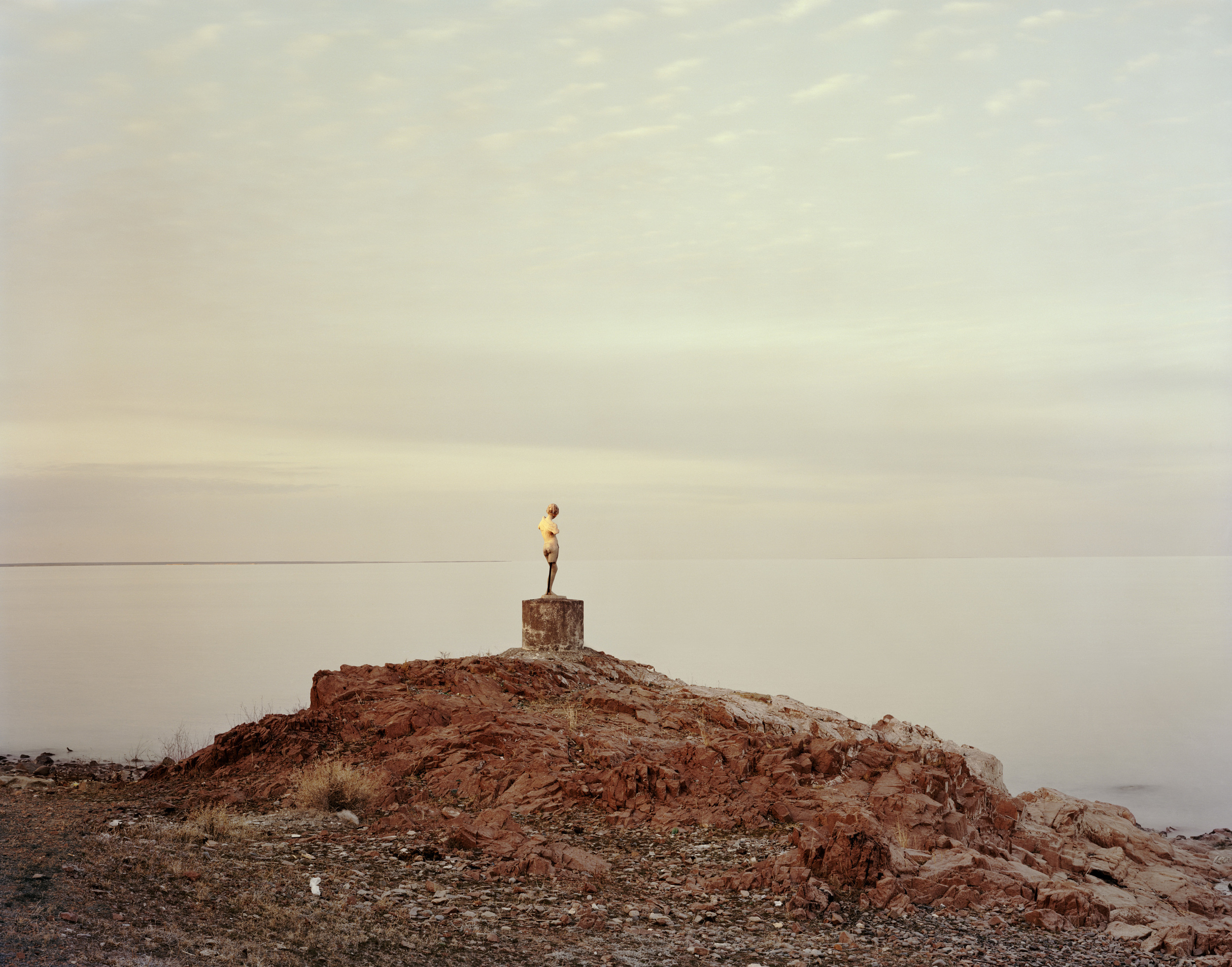Nadav Kander at Flowers Gallery
Image above: ©Nadav Kander, The Polygon Nuclear Test Site I (After The Event), Kazakhstan 2011 / Courtesy Flowers Gallery
Images above: ©Fernando Sandoval, Opening Night
Nadav Kander’s most recent project Dust, will be presented in New York for the first time in April 2016 at the Flowers gallery. Rooted in an interest in the ‘aesthetics of destruction,’ Dust explores the vestiges of the Cold War through the radioactive ruins of secret cities on the border between Kazakhstan and Russia.
Image above: ©Nadav Kander, PriozerskXIV (I Was Told She Once Held An Oar), Kazakhstan 2011/ Courtesy Flowers Gallery
Priozersk (formally known as ‘Moscow 10’) and Kurchatov are closed cities, restricted military zones, concealed and not shown on maps until they were ‘discovered’ by Google Earth. Enlisted to the pursuits of science and war, the sites were utilized for the covert testing of atomic and long distance weapons. Falsely claimed as uninhabited, the cities, along with nearby testing site ‘The Polygon’ set the stage for one of the most cynical experiments ever undertaken. Scientists watched and silently documented the horrifying effects of radiation and pollution on the local population and livestock.
Image above: ©Nadav Kander, The Aral Sea I (O cers Housing), Kazakhstan 2011/ Courtesy Flowers Gallery
Demolished to preserve their military secrets, the areas now consist predominantly of the ruinous architecture and desolate landscapes featured in Kander’s hauntingly beautiful photographs. A result of the Cold War and of the relentless quest for nuclear armaments, the ruins stand as accidental monuments to the melancholic, dark and destructive side of human nature.
Image above: ©Nadav Kander, The Polygon Nuclear Test Site XII (Dust To Dust), Kazakhstan 2011 / Courtesy Flowers Gallery
Fascinated by the area’s past and driven by discovery, Kander’s photographs portray stark fact and bleak setting with a characteristic poeticism. Secrets seem to seep from the silence of the crumbling monuments, bowing under heavy grey skies. Describing what he saw as ‘empty landscapes of invisible dangers’ Kander’s images evoke his sense of awe and fear as he responded to these places and to the weight of their history.
As Will Self writes in his foreword to Dust: “These images do not make beautiful what is not, they ask of us that we repurpose ourselves to accept a new order of both the beautiful and the real.”












